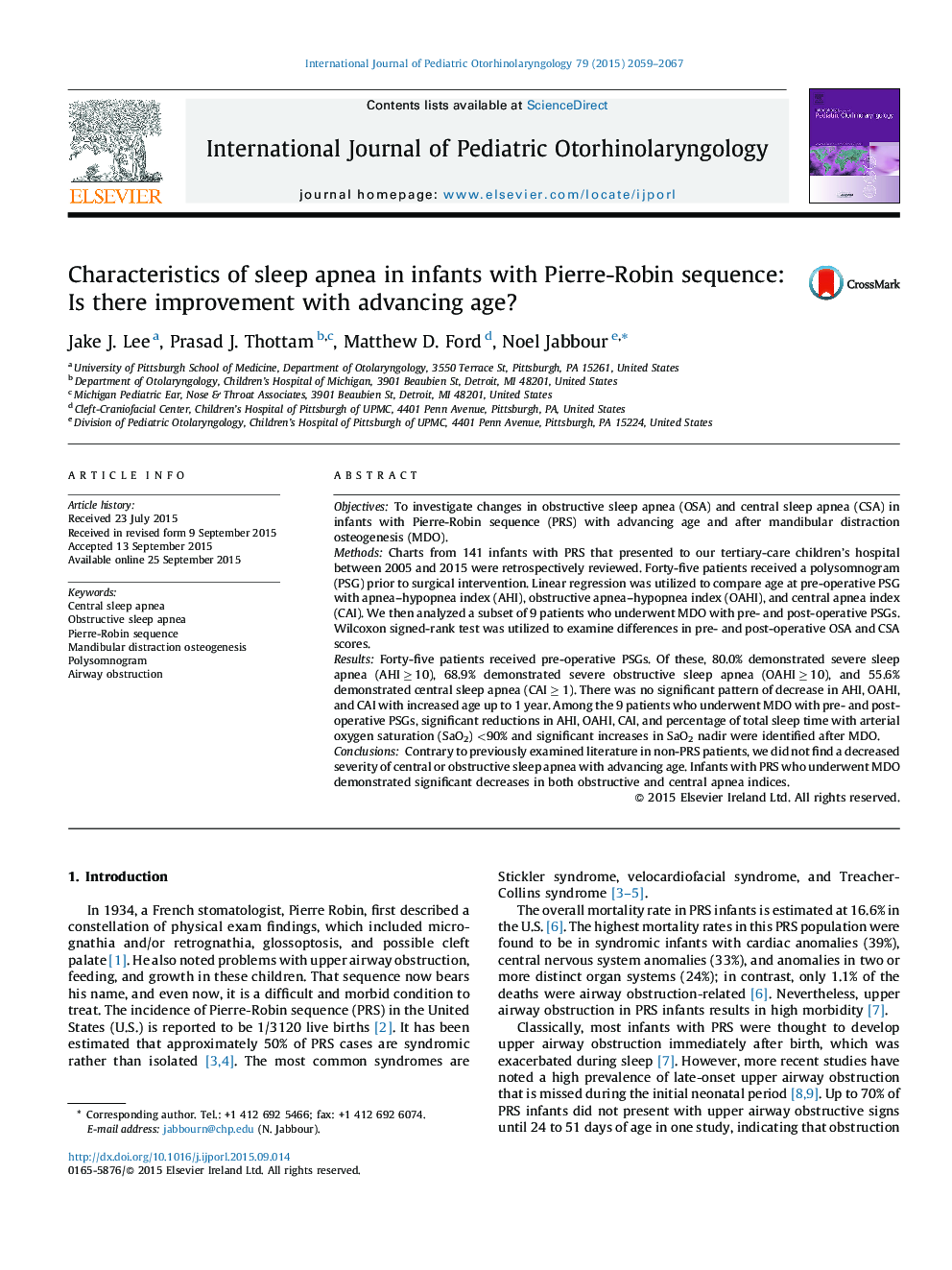| Article ID | Journal | Published Year | Pages | File Type |
|---|---|---|---|---|
| 4111560 | International Journal of Pediatric Otorhinolaryngology | 2015 | 9 Pages |
ObjectivesTo investigate changes in obstructive sleep apnea (OSA) and central sleep apnea (CSA) in infants with Pierre-Robin sequence (PRS) with advancing age and after mandibular distraction osteogenesis (MDO).MethodsCharts from 141 infants with PRS that presented to our tertiary-care children's hospital between 2005 and 2015 were retrospectively reviewed. Forty-five patients received a polysomnogram (PSG) prior to surgical intervention. Linear regression was utilized to compare age at pre-operative PSG with apnea–hypopnea index (AHI), obstructive apnea–hypopnea index (OAHI), and central apnea index (CAI). We then analyzed a subset of 9 patients who underwent MDO with pre- and post-operative PSGs. Wilcoxon signed-rank test was utilized to examine differences in pre- and post-operative OSA and CSA scores.ResultsForty-five patients received pre-operative PSGs. Of these, 80.0% demonstrated severe sleep apnea (AHI ≥ 10), 68.9% demonstrated severe obstructive sleep apnea (OAHI ≥ 10), and 55.6% demonstrated central sleep apnea (CAI ≥ 1). There was no significant pattern of decrease in AHI, OAHI, and CAI with increased age up to 1 year. Among the 9 patients who underwent MDO with pre- and post-operative PSGs, significant reductions in AHI, OAHI, CAI, and percentage of total sleep time with arterial oxygen saturation (SaO2) <90% and significant increases in SaO2 nadir were identified after MDO.ConclusionsContrary to previously examined literature in non-PRS patients, we did not find a decreased severity of central or obstructive sleep apnea with advancing age. Infants with PRS who underwent MDO demonstrated significant decreases in both obstructive and central apnea indices.
